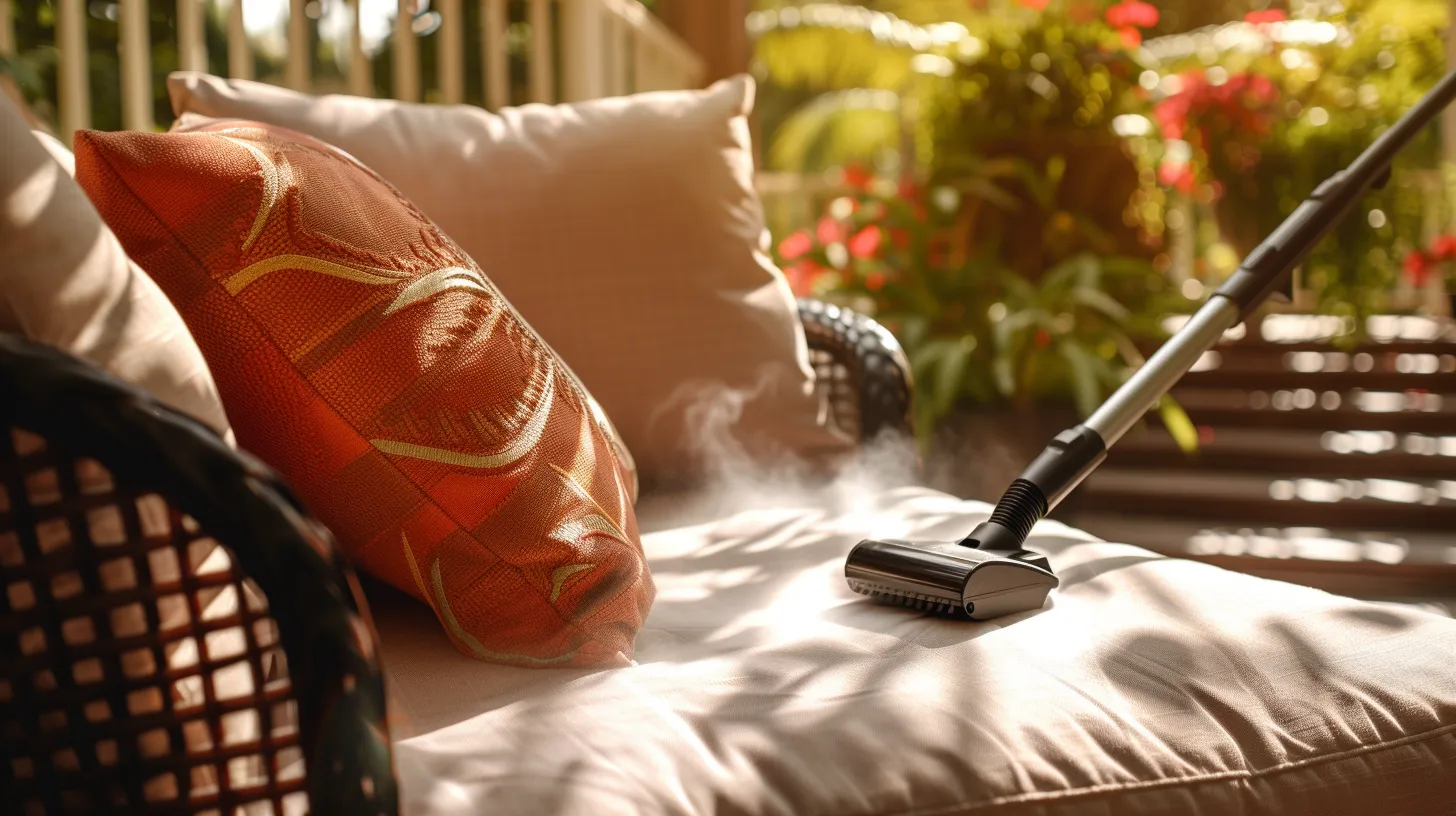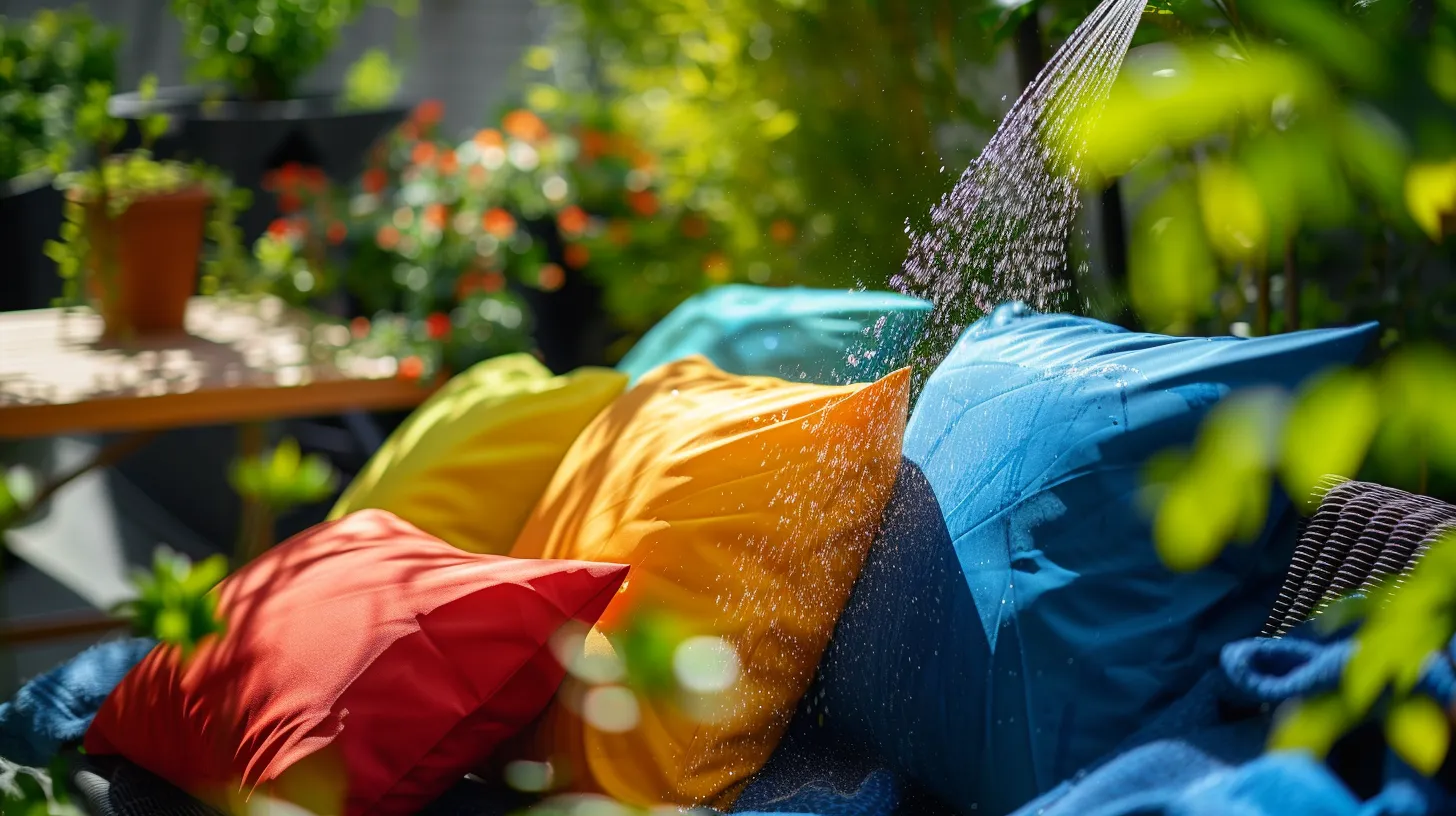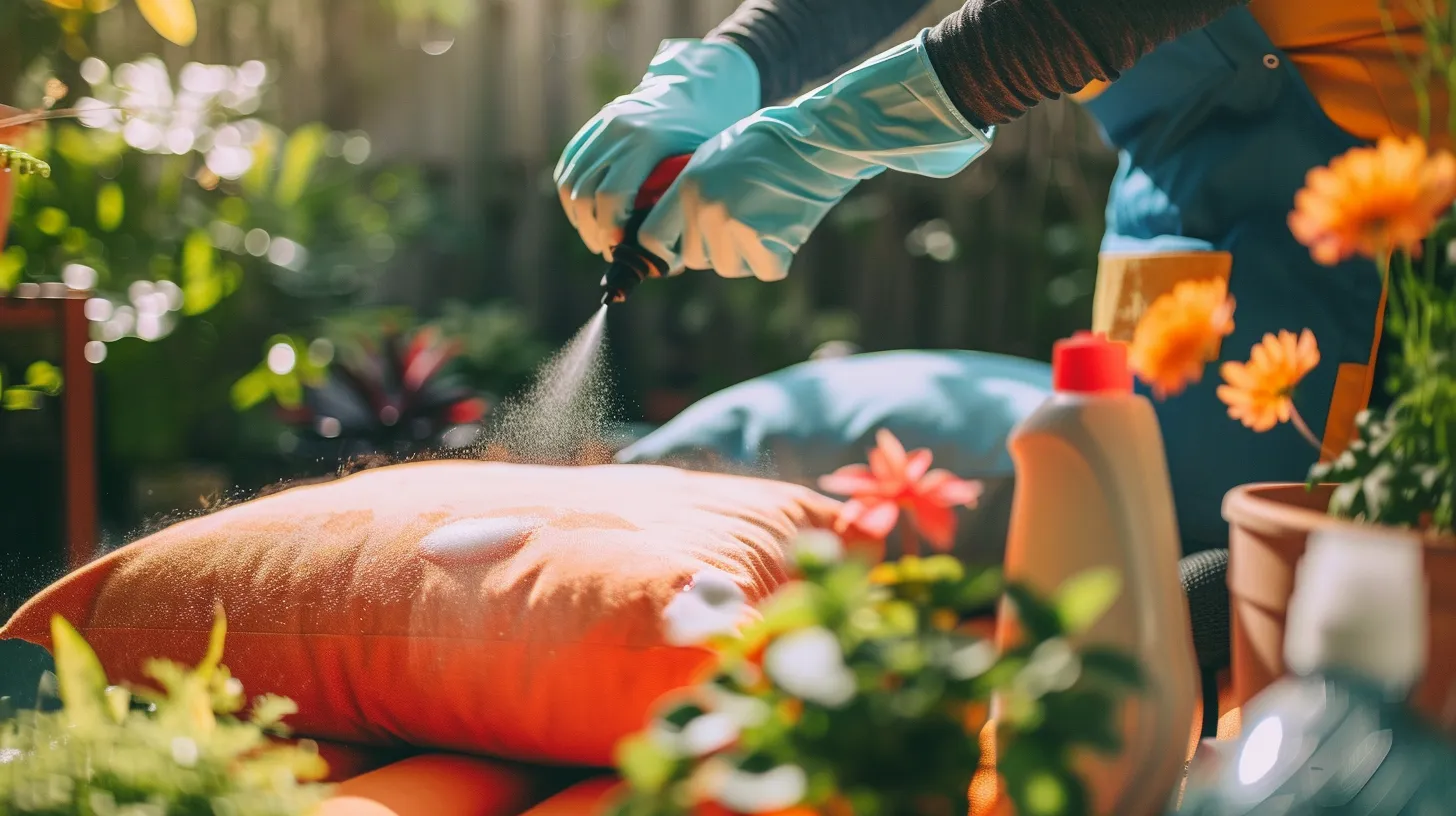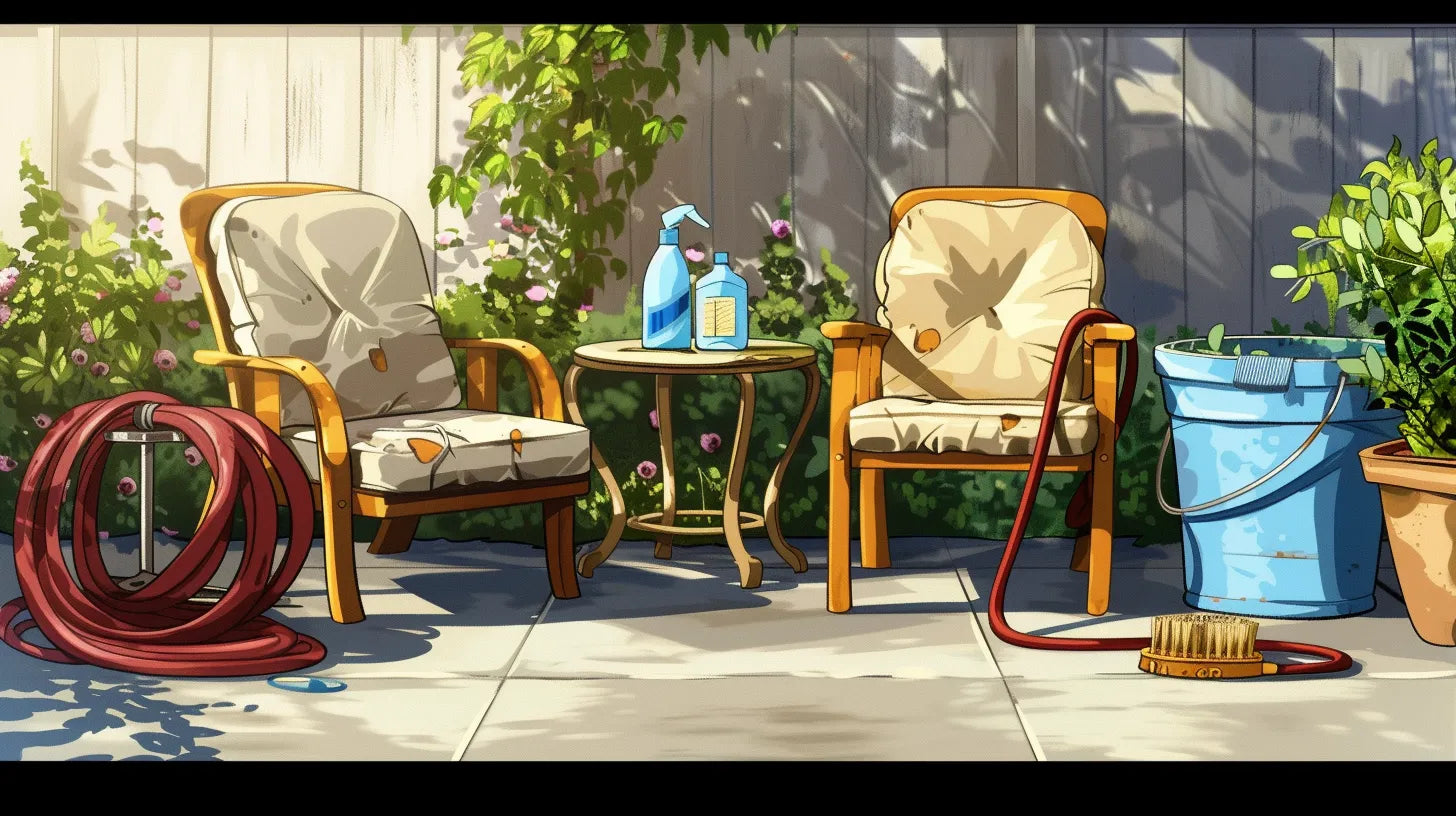Maintaining the aesthetic appeal and longevity of outdoor cushions requires more than just a superficial wipe down. Given their constant exposure to the elements, these cushions are prone to accumulating dirt, mold, and stains that can degrade their quality and appearance over time.
The process of cleaning these items is not merely a matter of aesthetics but also one of hygiene and fabric preservation. While the summary outlines a straightforward approach to tackling this task, it's imperative to consider the nuances involved in selecting the right cleaning agents, understanding the material specifics, and applying protective measures post-cleaning to extend the lifespan of your outdoor cushions.
The forthcoming discussion aims to unpack these critical aspects, providing a comprehensive guide that ensures your outdoor cushions remain vibrant and inviting, without compromising their material integrity.
Pre-Cleaning Preparations
Before diving into the cleaning process, it is crucial to undertake several pre-cleaning preparations to ensure an efficient and safe cleaning experience for your outdoor cushions. These preparations are not only fundamental for maintaining the aesthetics of your patio furniture but also for extending the lifespan of your outdoor furniture.
Firstly, lay out a tarp beneath the cushions to protect the cleaning area and prevent any potential damage to the lawn or outdoor surface. This initial step helps in containing any loose dirt or debris that may be dislodged during the cleaning process.
Next, gather your cleaning tools. A soft-bristled brush is essential for gently scrubbing the cushions without causing damage. For cushions with ingrained dirt, using a vacuum with an upholstery tool or a hand-held vacuum with a brush attachment can effectively remove loose dirt and debris. If you prefer, lightly cushion with water using a garden hose to dampen the surface before applying any cleaning solution.
Mixing a mild detergent with water in a bucket prepares you for the scrubbing stage, while having a clean towel on hand allows for immediate drying post-cleaning. For individuals opting for a pre-made spray cleaner, conducting a small patch test ensures the cushion's fabric does not react adversely to the solution.
These pre-cleaning preparations lay the groundwork for a thorough and successful cleaning of your outdoor cushions.
Vacuuming Loose Debris

Having completed the essential pre-cleaning preparations, the next step involves vacuuming loose debris from the outdoor cushions to ensure a thorough clean. This step is crucial for removing dry debris that, if left unattended, can lead to the growth of mildew and tree spores. Moreover, vacuuming prepares the fabric for a more effective application of stain remover, ensuring that dirt and stains do not become further ingrained during the wet cleaning process.
To effectively vacuum your outdoor cushions, consider the following steps:
-
Use a Hand-Held or Upholstery Vacuum: Opt for a vacuum with a brush attachment or one that includes a crevice tool to clean each cushion thoroughly. This includes the borders, piping, accent buttons, and the back of the seat.
-
Pay Special Attention to Seams and Edges: These areas can harbor more debris and require careful vacuuming to remove all loose dirt and debris, protecting your cushions from the outdoor elements.
-
Brush into the Cleaning: For hard-to-reach areas and crevices, use a vacuum with a brush attachment to ensure a comprehensive clean, preparing your seating area for a welcoming and tidy appearance.
Applying Cleaning Solutions

Once the initial vacuuming of outdoor cushions is complete, the next critical step is the application of cleaning solutions to address stains and embedded dirt.
The process involves mixing vinegar and warm water in a spray bottle to create an effective cleaning solution. This solution should be liberally sprayed over the cushions, allowing it to sit for approximately 15 minutes. This waiting period is crucial for loosening stubborn stains and making them easier to scrub away.
For a deeper clean, applying a cleaning solution of mild detergent and water prepared in a bucket is recommended. Using a hard-bristle brush, scrub the entire surface of the cushions with this solution to ensure thorough cleaning.
In cases where stains persist, undiluted distilled white vinegar can be directly applied using a spray bottle. After spraying, use a bristle brush to work the vinegar into the fabric, focusing on those stubborn areas.
Rinsing and Drying

After applying and scrubbing the cushions with cleaning solutions, the next crucial step involves thoroughly rinsing and drying them to ensure no residue remains. Properly executed, this phase guarantees the longevity and freshness of your outdoor cushions.
To achieve the best results, follow these steps:
-
Rinse : Use a garden hose on a high-pressure setting to rinse the entire cushion. This step ensures that all the cleaning solution is washed away from the surface of the cushion. It's vital to remove every trace of the cleaner to prevent any potential damage or discoloration to the fabric.
-
Dry : Begin by patting the cushions with a towel to remove excess water and speed up the drying process. Although it might seem trivial, this action significantly reduces drying time and helps prevent mold and mildew formation.
-
Air Dry : Finally, place the cushions in a sunny spot to air dry. Prop them up and rotate periodically to ensure the entire cushion dries evenly. Allowing the cushions to dry completely in the air, away from direct sunlight after the initial drying phase, ensures that no moisture is trapped inside, which could lead to mildew growth.
Protective Measures

Applying a water and stain repellent to outdoor cushions is a crucial step in safeguarding them against future stains and damage. This protective measure helps repel liquids and prevent stains from setting, maintaining the appearance and longevity of your outdoor cushions. When selecting a repellent, it's essential to apply it to a test spot first to ensure it doesn't damage the fabric.
In addition to applying a fabric protector, consider using outdoor covers or storing your cushions in an outdoor storage box when not in use. This extra layer of protection shields them from the elements, including sun, rain, and dirt, which can cause wear and tear over time. Following the manufacturer's care instructions for both cleaning and protection is key to avoiding creating any unintended damage to the fabric.
Investing in furniture covers can also provide an additional safeguard for your outdoor cushions, especially during harsh weather conditions. Regular maintenance, including promptly cleaning spills and regularly washing the cushions, plays a vital role in preventing excessive dirt accumulation and stains from setting in. These protective measures are essential in keeping your outdoor cushions clean, vibrant, and in good condition for years to come.










